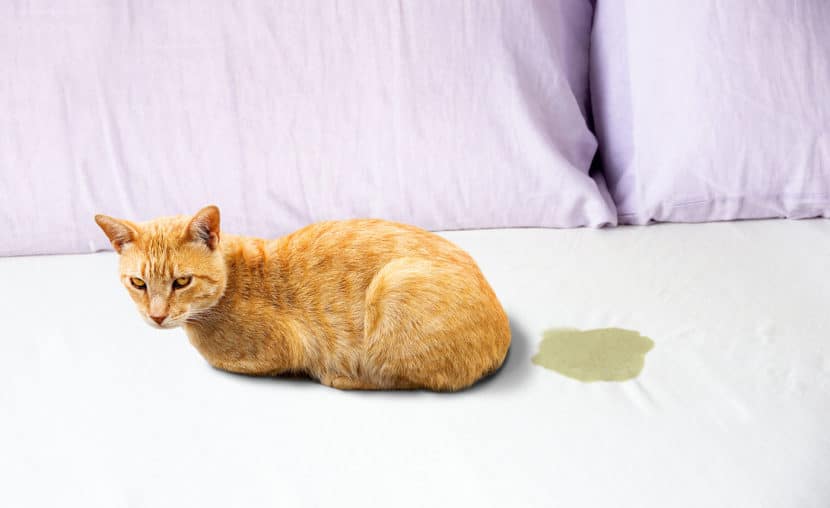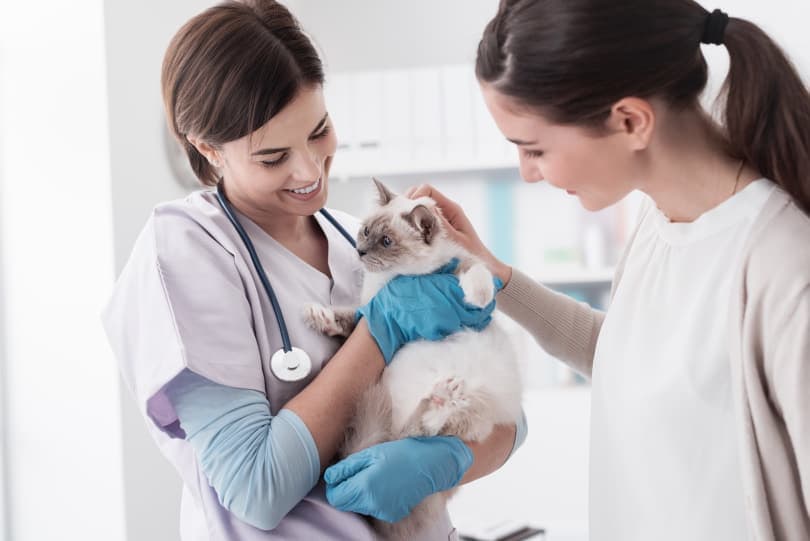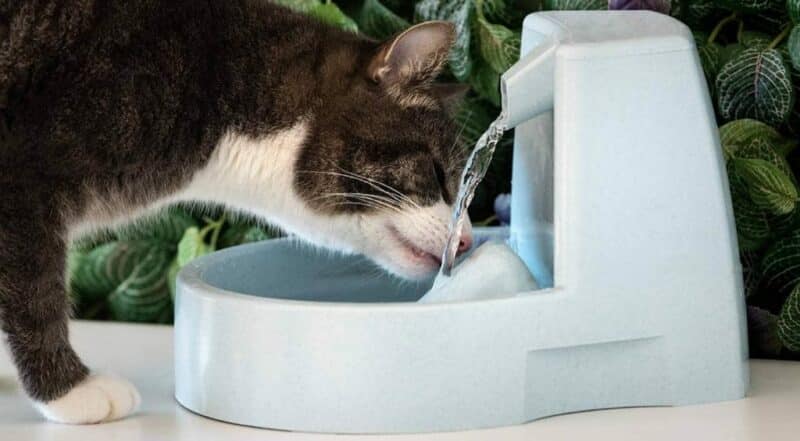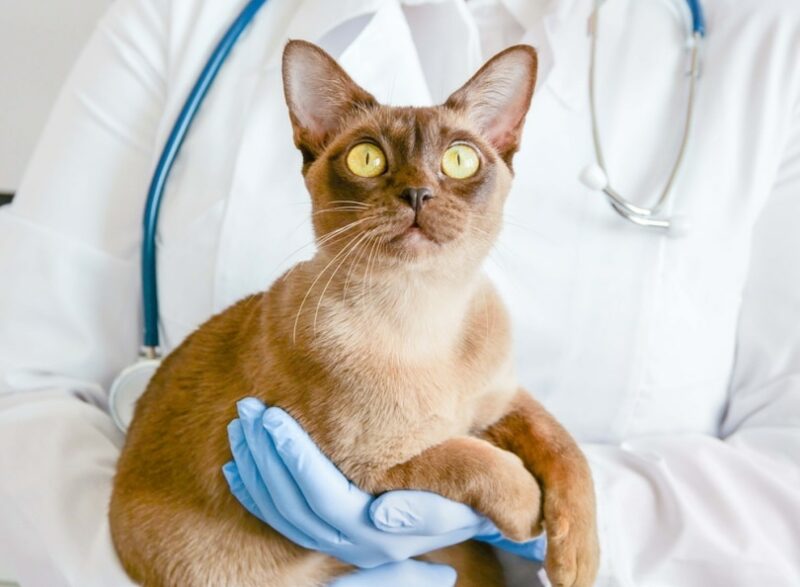Click to Skip Ahead
Urinary conditions are a major concern for cat parents. The umbrella term that includes several bladder and urethral conditions in cats is “feline lower urinary tract disease” (FLUTD). Feline lower urinary tract disease can be caused by a variety of conditions, including feline idiopathic cystitis, urinary stones, urethral obstruction, bacterial infections in the urinary tract, and, less commonly, injuries, tumors, or birth defects.
Because there is such an assortment of causes and varying levels of severity, the costs of treatment tend to vary. In general, the cost of diagnosing and treating urinary health issues in cats ranges from $150 to several thousand dollars. In this post, we’ll explore how much it costs on average to treat urinary conditions in cats.
The Importance of Cat Urinary Treatment
Urinary conditions can cause a great deal of discomfort and life-threatening complications for cats. Signs of urinary conditions include frequent trips to the litter box, unsuccessful attempts to urinate, and vocalizing when urinating—some cats actually cry out in pain when using the litter box. Peeing outside the litter box is another sign, as is blood in the urine and licking their genitals.
Moreover, in some cases, particularly in cats suffering from a blockage, urinary conditions can be fatal if treatment is not sought. For these reasons, seeking treatment for a cat showing signs of urinary conditions should be of paramount importance.

How Much Does Urinary Treatment Cost?
As with any procedure, the cost of treatment for urinary conditions varies depending on the condition your cat is suffering from, the severity of the problem, the treatment required, your location, and the clinic you choose to go to. To give you an idea of how much different treatments cost, we’ve put together this table of estimates with some additional information.
Please bear in mind that these are just estimates based on our research—ask your veterinary clinic how much they charge for specific treatments and procedures, as costs can vary greatly. Tests required to diagnose the condition, such as radiographs and ultrasound scans, may not be included.
| Condition or Procedure | Treatment Price Estimate | Additional Details |
| Urinary tract infection | $150–$200 | Treatment costs for a simple UTI typically include vet consultation, lab tests, and antibiotics. If your cat suffers complications or needs a special kind of treatment, the cost is likely to increase. |
| Urinary Stones | $1,000–$3,000 | A cystotomy is a surgical procedure to remove bladder stones. The cost may or may not include pre-op testing and/or post-op meds, so be sure to check with your vet. |
| Urinary blockage (stabilization) | $750–1,500 | This price estimate is for initial emergency treatment. |
| Urinary blockage (hospitalization) | $1,500 or more | Hospitalization for several days is often necessary after unblocking a cat’s urethra. |
| Feline Idiopathic cystitis | $100-300 | Episodes of FIC can be short-lasting but will be often occur repeatedly over time. |
Additional Costs to Anticipate
Some veterinary clinics include the cost of extras like pre-operative tests, diagnosis, post-operative medications, and prescription foods in their price estimates, whereas some may charge for these things separately. Here are some potential additional costs to anticipate.
| Procedure/Service | Estimated Cost | Additional Details |
| Cystoscopy (for diagnosis) | $1,000–2,000
|
A cystoscopy lets the vet see into the lower urinary tract and is used to diagnose some urinary conditions. The price may include taking a tissue biopsy. |
| Urine Test | $20–$75 | This depends on the clinic, location, and the type of test required. |
| Antibiotics or Antiinflamatories | $20–40 per pack | |
| Urinary Care Prescription Food | $30–90 | The cost will vary depending on the bag size. |
| Initial Vet Consultation | $40–100 | This varies depending on your location and the individual clinic. |
How Often Should I Get My Cat Checked for Urinary Conditions?
If your cat seems generally fine and healthy and is not showing any signs of disease, it’s recommended to take them for a general checkup at least once per year.
Some vet clinics offer packages for annual wellness checkups, which include basic procedures like vaccines, antiparasitic drugs, fecal testing, urine testing, and blood pressure checks. It might be worth considering one of these as they can save you money on taking your cat for these procedures individually.
On the other hand, if your cat is showing signs of urinary conditions (i.e. frequent trips to the litter box, straining to urinate, meowing in pain when using the litter box, blood in urine, etc.), please contact your vet right away.

Does Pet Insurance Cover Cat Urinary Treatment?
Yes, since conditions like idiopathic cystitis, UTIs, bladder stones, and obstructions are illnesses, the treatment for these conditions is typically covered under comprehensive accident and illness pet insurance plans. That being said, it’s always best to double-check with your provider.
Furthermore, pet insurance providers usually do not cover pre-existing conditions. These are conditions that affect your cat before the waiting period (the period between signing up and when you can actually make claims) ends. Different providers have different waiting period lengths.
How to Maintain Your Cat’s Urinary Health
If your cat suffers from a specific condition, your vet will be able to advise you on the best way to take care of your cat’s health at home.
Here are some general tips for keeping your cat’s urinary tract in good working condition:
- Make sure your cat always has access to fresh, clean water. If they’re not drinking enough, you can increase their water intake by feeding them wet food or adding some water to their favorite diet.
- Feed a high-quality, nutritious diet. You can buy cat food formulated to support urinary health, but it’s best to seek advice on changing your cat’s diet from your vet first.
- Maintain the cleanliness of the litter box—a dirty litter box can put cats off using it.
- Make sure your cat’s litter box is in the right location of the house and you have one per cat, plus one extra, if you live with more than one cat.
- Consider investing in a water fountain.
- Reduce stress in your cat’s environment.

Conclusion
In conclusion, the cost of diagnosing and treating urinary health issues in cats ranges from around $150 to several thousand dollars, depending on the condition that requires treatment. A minor UTI may not be too costly to treat, but urinary blockages and bladder stones can be much more expensive.
If you’re concerned about being able to afford potential veterinary bills in the future, you might want to consider a pet insurance plan. You can also reach out to your vet to ask if they would consider creating a payment plan for you instead of having to pay everything upfront. Some clinics may allow this, but there are no guarantees.
Featured Image Credit: Elpisterra, Shutterstock











